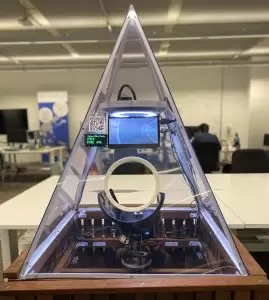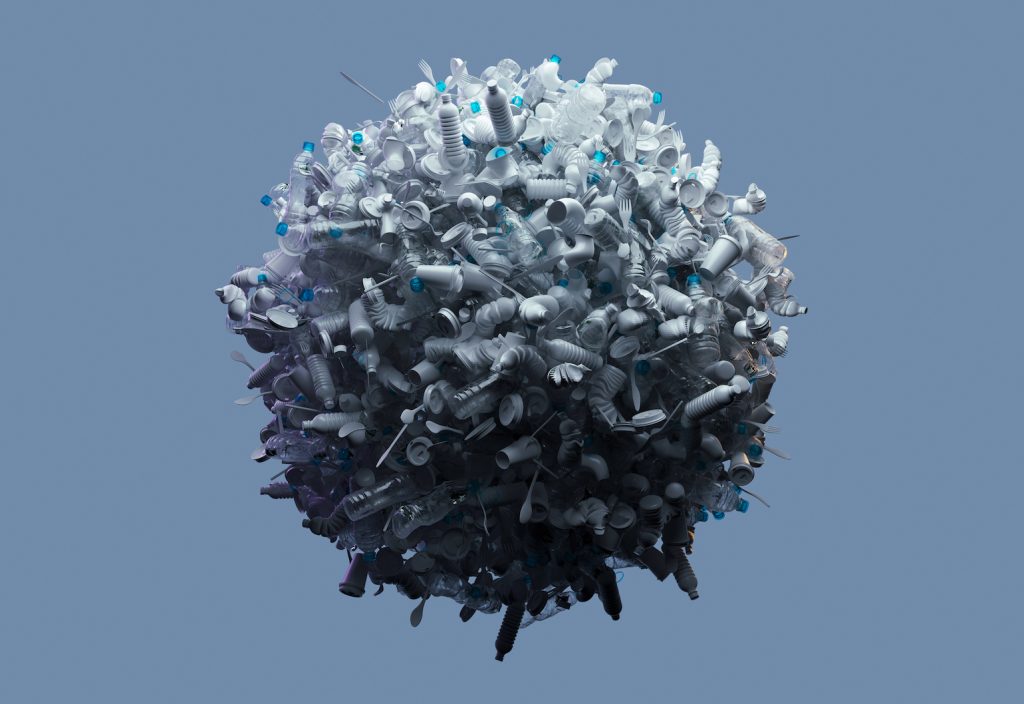CSIRO engineers hope a new smart bin will make recycling easier and more effective.
The CSIRO’s Ending Plastic Waste Mission has a formidable challenge: it is aiming for an 80 per cent reduction in plastic waste entering the Australian environment by 2030.
NSW alone generates 800,000 t of plastics every year, with just 10 per cent being recycled. The wide range of plastic waste materials poses unique challenges for the recycling process. The contamination of one type of plastic by another can also cause serious processing problems.
For the past year, electronics engineer Dr Wei Ni has been part of the CSIRO Ending Plastic Waste Mission, working with the University of Technology Sydney (UTS) to develop a smart bin that can sense and separate different types of waste containers.

For National Science Week this year, Ni and his team demonstrated a prototype of the Smart Bin that can sort waste into metal, glass, and high-density polyethylene (HDPE) and polyethylene terephthalate (PET) plastic.
To sort waste at the point of capture, the device incorporates Internet of Things, sensing, robotics, artificial intelligence and infrared spectroscopy technologies.
“When a container or bottle is put into the bin, our weight sensors will first check if it is glass, which is substantially heavier than the rest. If it’s not, the object moves to the next stage where sensors will check if it is a metal can,” says Ni, who holds the title of Principal Research Scientist at CSIRO.
The next stage uses AI-based image processing to determine whether the plastic bottle is PET, typically used for beverage container bottles, or HDPE, typically used for shampoo bottles.
“We have different sensors to assess a container over multiple steps until we find the right category for it,” says Ni.
“A robotic arm inside the bin will spin around and find and place the bottle or can in the correct sub-recycle bin.”
[embedyt] https://www.youtube.com/watch?v=iJzOKlCA5yQ[/embedyt]
The prototype’s results have been encouraging. “We achieved close to 100 per cent accuracy during the testing stage,” says Ni.
He is also working on a solution to deal with instances when incorrect items are added to the bin. “There is a potential for us to create another sub-bin inside the bigger Smart Bin. Anything which cannot be categorised into glass, metal, PET or HDPE could end up in the fifth bin. This could be our next step.”
This initiative also has the objective of supporting the transformation of waste into a resource. Victorian small business Casafico already manufactures commercial construction materials from recycled glass, newspaper and polystyrene, much of which is sourced through an online waste exchange marketplace.
“One big purpose of this Smart Bin is to educate,” says Ni. “We want to demonstrate the recycling concept and allow people to see what’s happening inside the process. This will promote recycling awareness in the community and also improve social responsibility.”
Ni himself learned from the process. “I personally was not aware of the difference between PET and HDPE until I went on this journey,” he says.
“In a small monitor on top of the glass, you will see how an item is categorised. We hope the general public will understand that plastics are actually different and need to be recycled in different ways. Only by doing that will waste products become assets and generate additional value rather than being a burden for our society and the environment.”
Dr Deborah Lau, Lead for the Ending Plastic Waste Mission, believes we all need to change how we use and how we think about plastic to achieve the mission’s ambitious goal.
“We need to treat plastic like a resource and a commodity, rather than as waste,” she says.
The CSIRO Smart Bin’s waste data could be used to generate new insights and Dr Wei Ni is keen to explore this aspect.
“When I look at what I put into my household bin, it could expose my lifestyle, diet, medication, whereabouts, health condition,” says Ni.
His plan is to use the latest differential privacy method to protect and anonymise the data, so the information remains useful while protecting the privacy of whoever throws waste into the bin.
